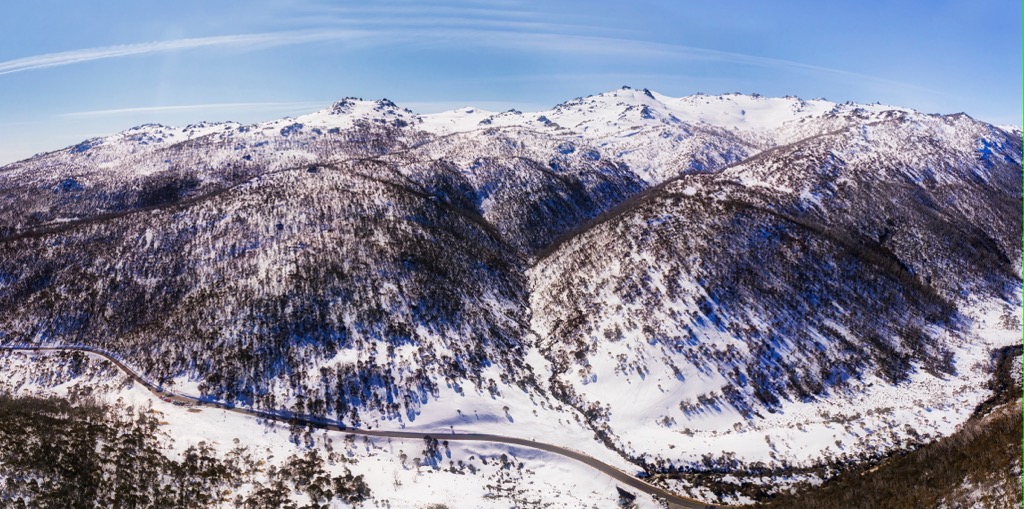Get PeakVisor App
Sign In
Search by GPS coordinates
- Latitude
- ° ' ''
- Longitude
- ° ' ''
- Units of Length
- Temperature

Yes
Cancel
Share ×

Scan the QR code and open PeakVisor on your phone
❤ Wishlist ×
Choose
Delete
Perisher Ski Resort in the Snowy Mountains, southeast of Canberra, Australia, is the largest ski resort in the Southern Hemisphere. The resort caters to snow enthusiasts, boasting 48 lifts (including conveyors), sledding hills, and cross-country ski and snowshoe trails, which cover 1,245 hectares (3,080 acres) of forested rolling mountains. The resort covers 334 m (1,096 ft) of vertical from summit to base. The resort's highest point, Mt. Perisher (2,054 m / 6,739 ft), is one of five peaks in the resort boundary, which sit above four villages: Perisher Valley, Smiggin Holes, Guthega, and Blue Cow. Perisher’s terrain is mostly intermediate, with many moderate slopes and groomed runs that weave through forests and over bare snowfields. While there aren’t many cliffs or drops, there are a few short off-piste pitches of steep terrain for experts and freestyle terrain with features of all sizes.
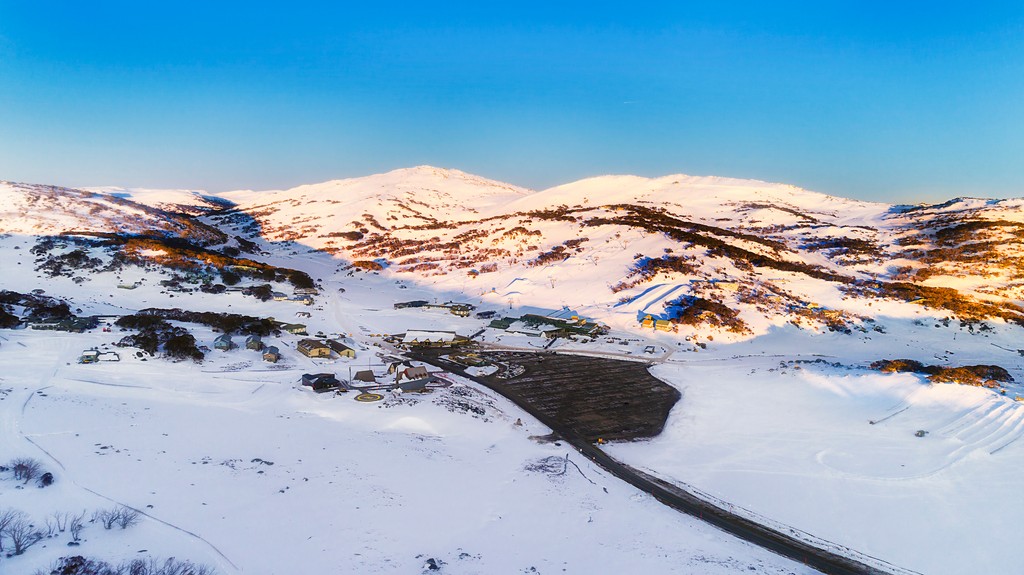
Mt. Perisher is one of five peaks at Perisher Ski Resort. The other four are Black Perisher Mountain (2,014 m / 6,608 ft), Blue Cow Mountain (1,994 m / 6,542 ft), Guthega Peak (1,924 m / 6,312 ft), and Mt. Piper (1,830 m / 6,043 ft). These peaks occupy the outer edge of Kosciuszko National Park, a rugged alpine region capped by Mt. Kosciuszko (2,228 m / 7,310 ft), the tallest mountain on mainland Australia.
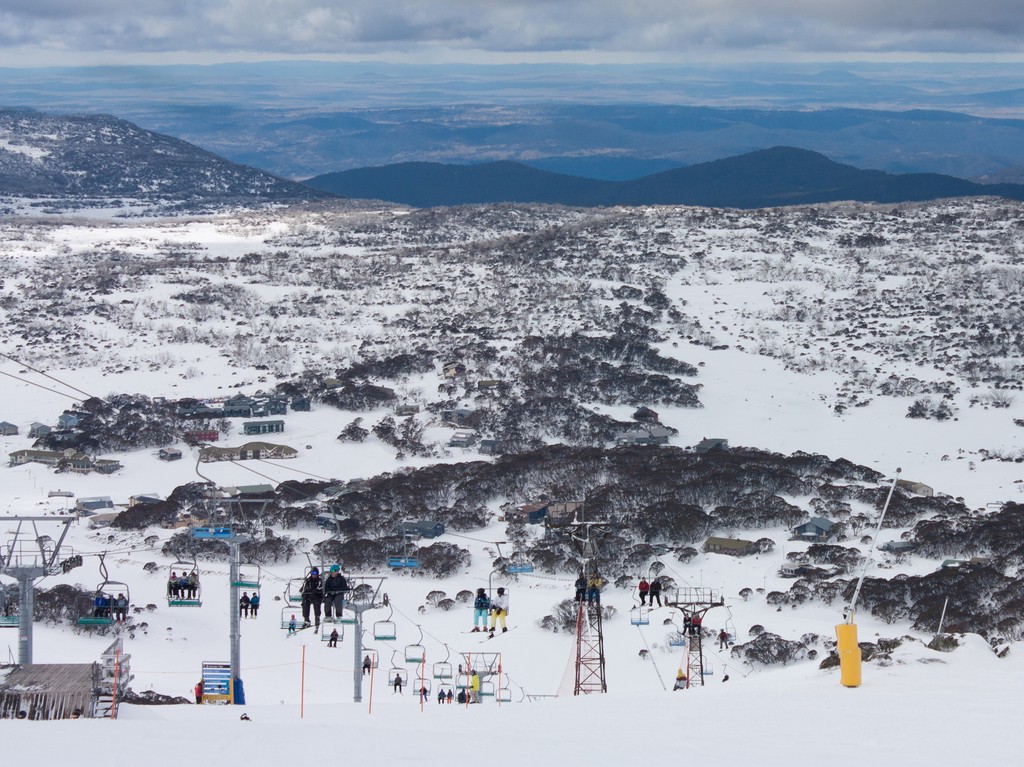
The area is a part of the Snowy Mountains, a subrange of the Australian Alps. The Australian Alps span roughly 3,000 km (1,900 mi) across Victoria and New South Wales. However, the Alps are just one part of the Great Dividing Range, a vast, elevated expanse of rugged topography spanning Australia’s east coast.
The area around Perisher is mostly undeveloped or rural. The closest airport to the resort is about two and a half hours to the north, in Canberra. Most international visitors to Perisher fly in and out of Canberra International Airport, rent a car, and drive to the mountain. The route to Perisher is mostly highway driving along A23, B23, and B72. Then, take a left and exit onto the Kosciuszko Road to Jindabyne.
Jindabyne is the largest town in the area, and a lot of the off-resort lodging is here. If you don’t want to drive the rest of the way to the ski field, the good news is you don’t have to. Perisher operates a daily shuttle to and from Jindabyne.
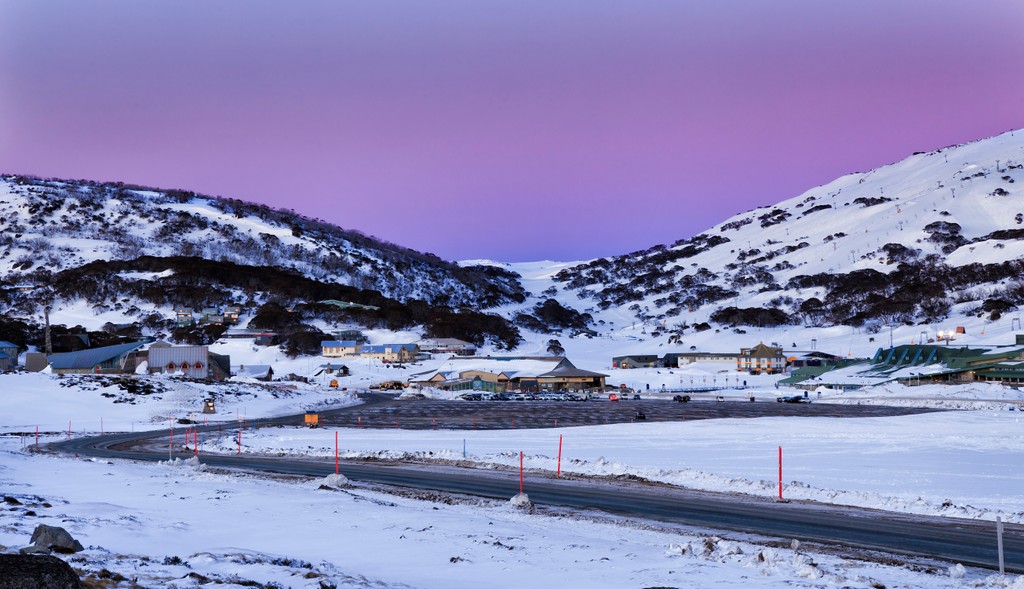
Another unique option for getting to the resort is to take the underground train; an alpine cog train called the Skitube. The Skitube departs from Bullocks Flat and takes about 10 minutes to get to the resort. If it’s busy, this makes getting to the mountain by car much more manageable. You can just park outside the resort and hop on the Skitube to bring you the rest of the way there. If you’ve never been to Perisher, I recommend taking the Skitube just for the unique experience of taking an underground train.
Perisher Ski Resort operates roughly from mid-June to late September or early October. Because the resort makes so little artificial snow, opening and closing dates depend on snowpack, which can be variable.
If you’re new to skiing in the Southern Hemisphere, you might not have realized that the holiday crowds typically seen in the Northern Hemisphere are a non-issue.
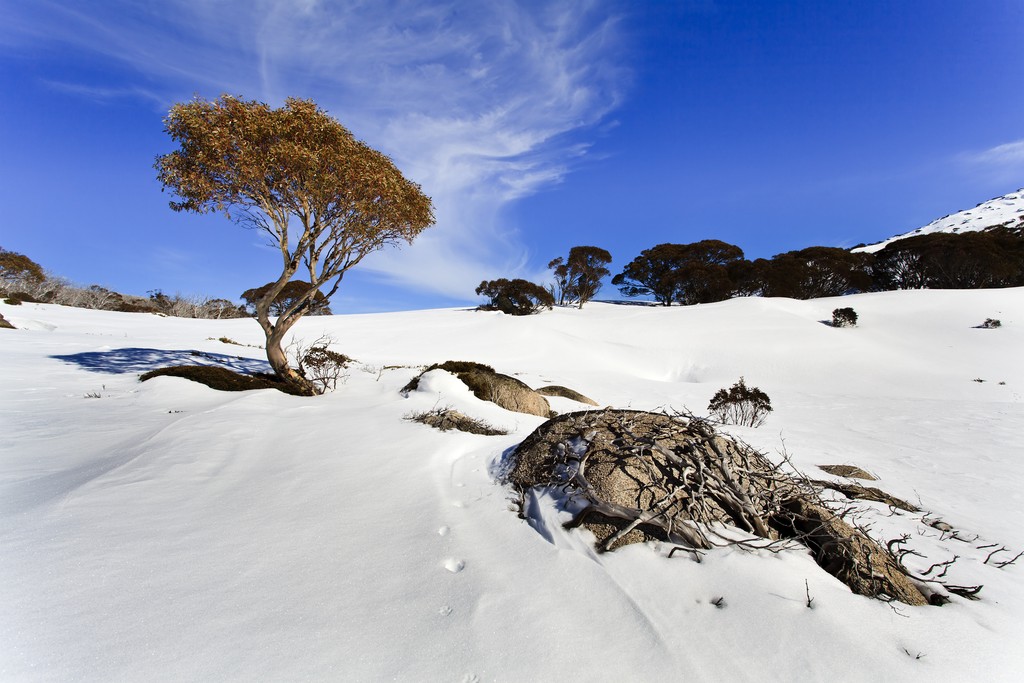
Many people travel to the Southern Hemisphere in the Austral winter to fill in the gaps in their ski season after the lifts have stopped running in the north. But Perisher still has a “peak season” during the local school holidays in early-mid July and August. Overall, the best time to visit is just after the August school break, at the end of August into the beginning of September, as this is also when the snow is best.
Like many other resorts in the Southern Hemisphere, Perisher sits at a low elevation and has a temperate coastal climate. You might be disappointed if you compare the snowpack to just about anywhere in North America or Europe. But for Australia, the snowfall is consistent.
On a month-to-month basis, June, July, and August all see significant snowfall. September is typically leaner in snowfall days, but there have been some big storms this time of the year. July typically fares the best, with an average of six snow days and 64 cm (25 in) of snow. However, much of this snow usually goes toward building a good base. Locals all report that August is the best time to ski Perisher, with a substantial snowpack and the likelihood of fresh snow. By October, snowfall stops, and the resort enters spring.
Storms at Perisher rarely exceed 38 cm (15 in). Don’t expect to do much “deep powder skiing” here, although storms will regularly soften up the off-piste sections and give you enough to bounce around on.
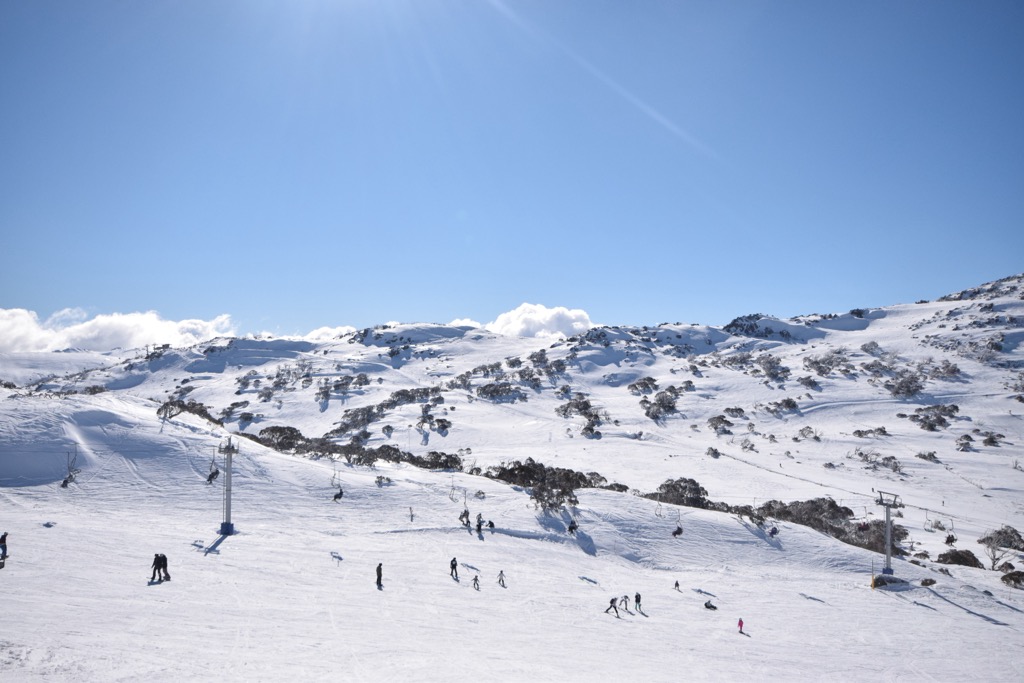
Temperature-wise, Perisher’s weather is very moderate. Daily highs from June to September rarely fall below 2°C (35°F), and lows rarely fall below -5°C (-23°F). Generally, the temperature hovers around freezing for the season's first few months. In September, there is a noticeable uptick in warm weather. By October, the Austral spring is in full swing with highs around 10°C (50°F).
In summary, May brings lower temperatures and some precipitation but is still an autumn month. In June, winter arrives with far lower temperatures and base-building snowfall. Snowfall peaks in July, with the most snow days, but much of this goes to building a base. The optimal riding conditions are in August when the mountain’s base is thick enough to ride on. Storms are less frequent but more significant. September sees both cold temperatures and snowfall tapering off. And by October, the mountain wraps up operations, and warmer weather returns.
Getting around Perisher can be confusing between its five peaks and rolling foothills, four villages, winding valleys, and extensive lift system. Even with a map, it’s hard to get a sense of the lay of the land. If you get confused while on the hill, the PeakVisor App can help.
Looking at the map, you’ll see a maze of trails descending from ridgelines across several aspects. It’s hard to tell where the different parts of the mountain connect and how to get around.
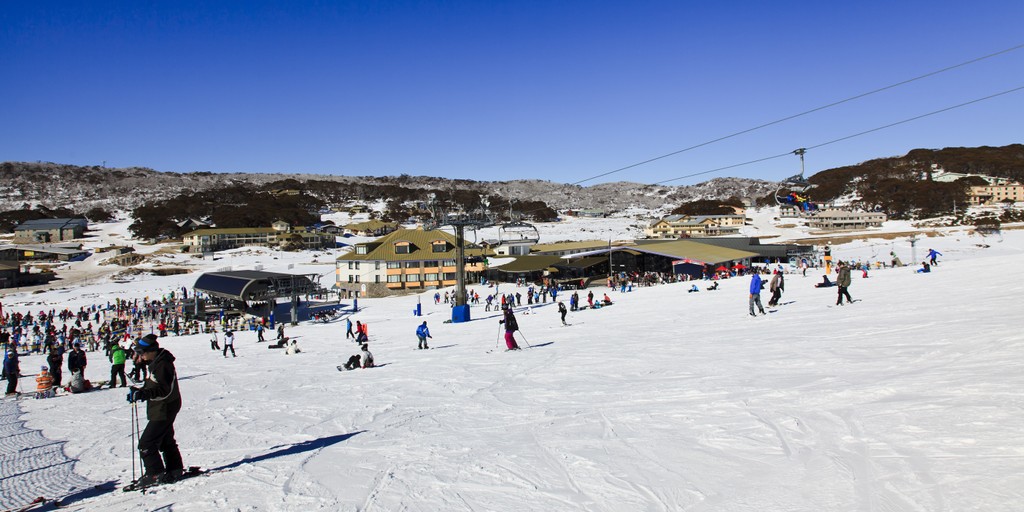
In a nutshell, Perisher consists of four mountains that surround a T-shaped valley and connect the four surrounding villages. It has a prominent “front side,” including most of the skiable terrain, a “backside,” dropping into the adjacent valley, and a “side hill,” holding much of the resort’s beginner terrain.
Looking at the map, Mt. Perisher sits on the far left-hand side; this is the beginning of the mountain’s front side, which wraps around Black Perisher and continues to Mt. Blue Cow. Mt. Perisher is the highest point at the resort and features a lot of moderate, treeless slopes. The in-bounds slope curves around a semi-conical face to a ravine, separating it from Black Perisher.
Black Perisher covers much of the resort’s area. Starting above the ravine on the looker’s left, you’ll notice a few short, steep runs that drop into forested, more gentle terrain. The middle of the mountain is a broad, convex slope covered in forest and many groomed runs; this is the first face most people see when they arrive at the resort, and it sits directly above Perisher Village and the mountain’s main lodge. Past this face is a ridgeline, both sides of which are in-bounds. The front-facing side features a mix of terrain that gets steeper the further right you go.
The backside of this ridge is a narrow box canyon that is densely forested on the near side. The end of the ridge is sparser but steeper and more technical. The canyon leads to the base of Mt. Blue Cow.
Beyond this canyon, you are officially on the “backside” of the resort. Around the corner, you’ll see an entire basin mostly hidden from view at Perisher Village. It includes the north aspect of Black Perisher, which is primarily ungroomed and includes some challenging slopes, and the south aspect of Guthega Peak. Black Perisher’s north side is a broad fan of forested ravines that leads up to a smaller peak on the far right, with some of the resort’s only double-black diamond terrain.
Guthega Peak, on the other hand, is much more open and gradually sloped. Although it’s called a peak, Guthega has no prominence and is technically just the end of a ridgeline descending from Mt. Blue Cow's summit. You can ski about half of the mountain’s flanks, from the east aspect to the south. Long groomers cover most of the terrain and are much more straightforward to navigate than the far side of the basin, under Black Perisher.
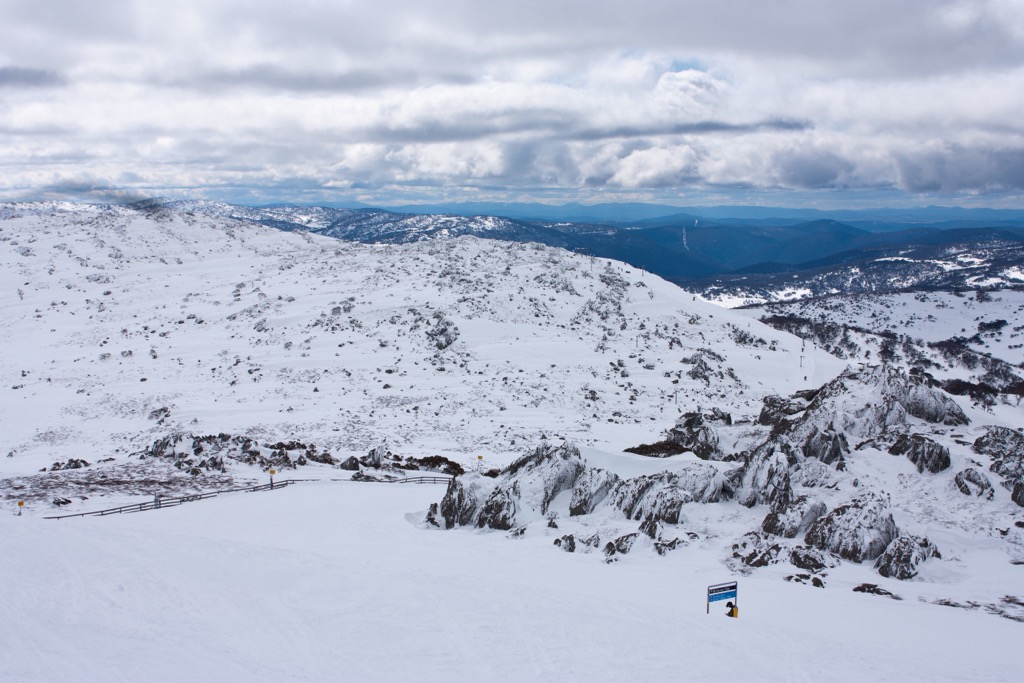
These two faces connect by a gentle slope covered in sparse trees. The ungroomed glades collect fresh snow well on storm days. This side of the mountain also provides impressive views of Kosciuszko National Park.
At the top of the basin on the back side of the resort is a high saddle with a small hill in the middle, where Blue Cow Terminal sits. You’ll see the summit of Mt. Blue Cow to the north. Mt. Blue Cow holds some of the biggest terrain at Perisher. Although its summit is slightly lower than Mt. Perisher’s, the base is about 125 m (410 ft) lower. Long runs start above the treeline, zigzagging through rocky outcroppings into sparse trees, which become dense forests near the bottom. In particular, the slopes directly under Ridge Quad Chair are very steep. Given how much vertical they cover, these are probably the most challenging runs at Perisher.
Just one area of the mountain remains unexplored. Mount Piper is somewhat isolated from the rest of the action, sitting across the valley from Black Perisher with its groomed runs on the far side of the peak. To get there, you’ll have to cross a bridge near the base of Telemark T-Bar and then take the Piper T-Bar up the mountain's southwest face. You’ll pass over a ridge and into a short, funnel-shaped bowl.
The top of this face is Mt. Piper’s summit. The bottom is Smiggin Holes Village, one of the mountain’s two main parking lots, where visitors can find many of the resort’s amenities. Looking up from the bottom, you’ll see a face that is mostly very gentle or moderate, covered in groomed runs. This entire section of the resort is designated as a “family zone” and is where many beginners start when they come to Perisher to learn to ski.
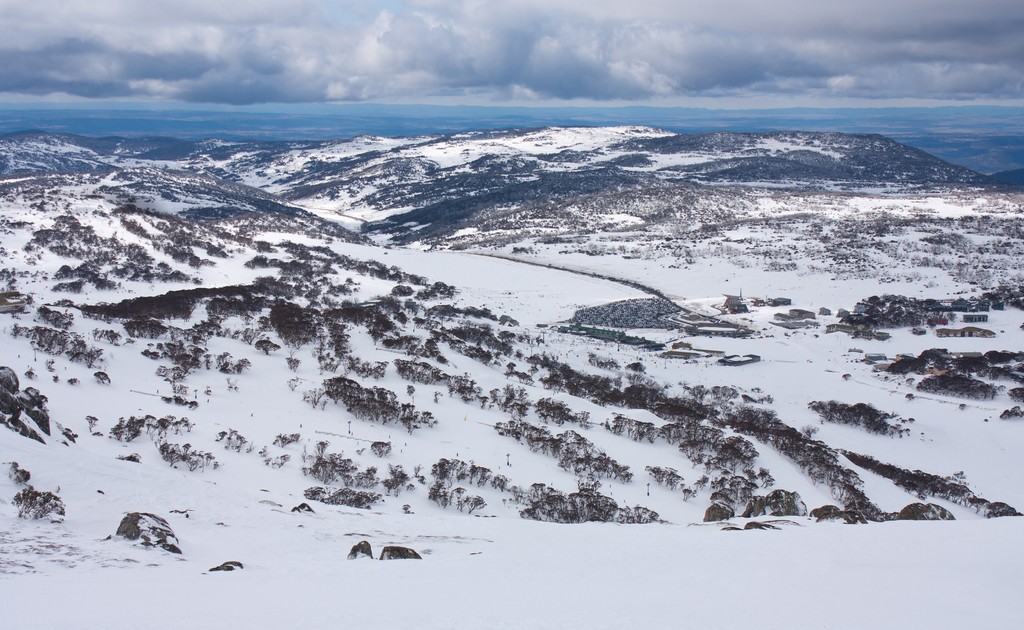
Slopes
Ski lifts
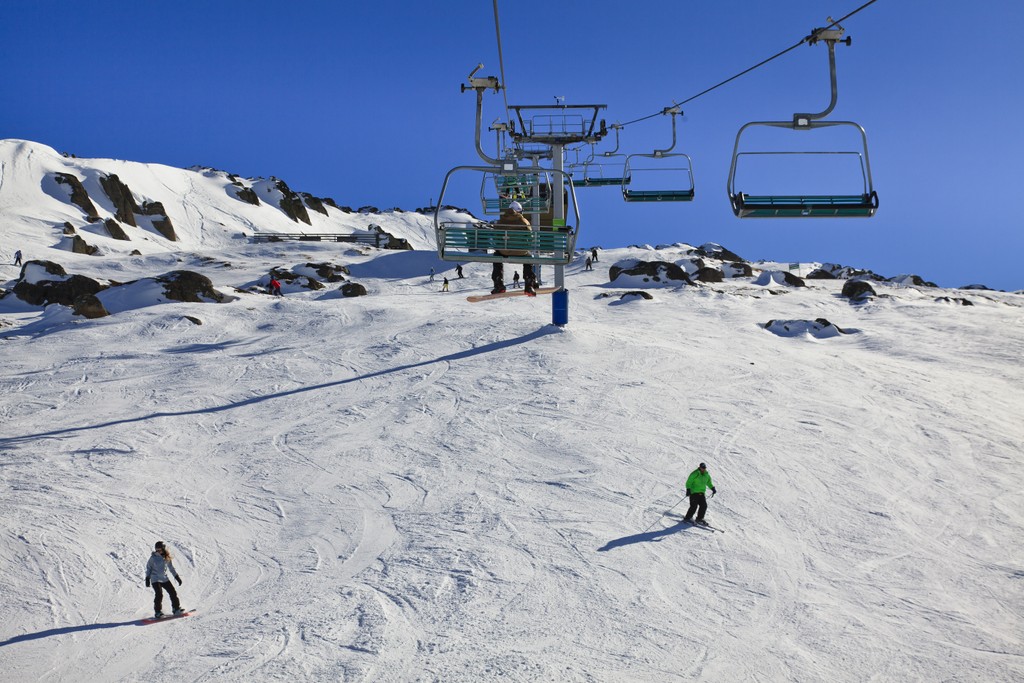
Other features and services
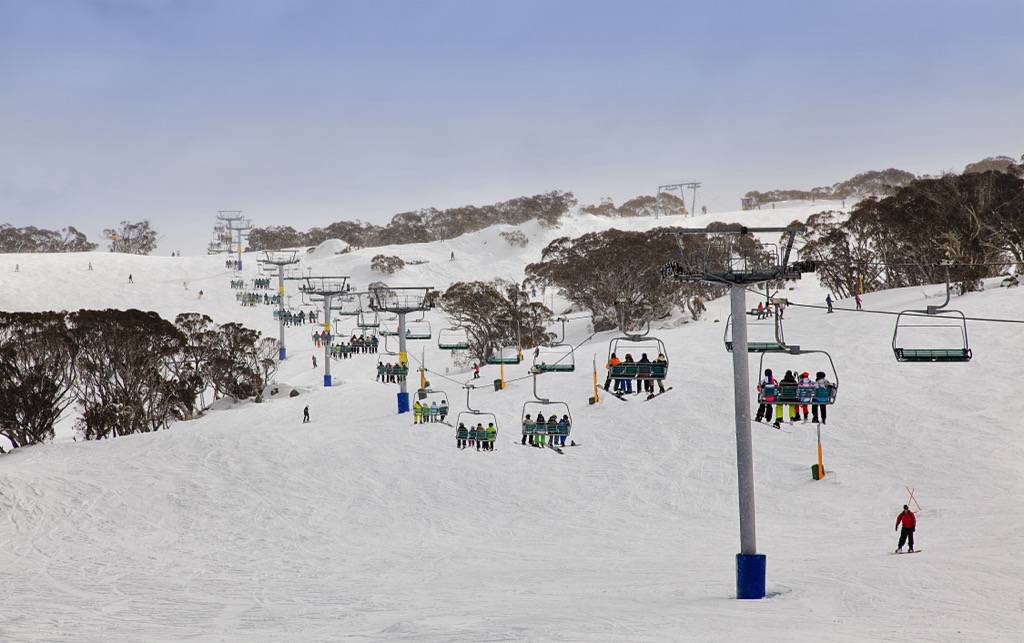
The layout of the terrain at Perisher is a little confusing. But the map starts to look very confusing when you add more than a hundred named runs, 14 chairlifts, 26 tow lifts, and eight conveyors. The resort designates beginner, intermediate, and advanced terrain as green, blue, and black, similar to resorts in North America. But there are also double-blue (between intermediate and advanced) and double-black diamond (experts only) runs to look out for.
The good news is that most of these lifts are redundant (meaning they service terrain that another lift also services). The vast majority of them are some kind of tow, either a T-bar, J-bar, or rope tow. On top of this, only a few of them are necessary to access all of the terrain.
So, to explain a complicated resort as simply as possible, let’s take a tour, starting at the Perisher Centre of Perisher Village; this puts you at the base of Black Perisher Mountain, one of the most popular faces at the resort. Various terrain covers the face, ranging from beginner slopes to the more intermediate gullies on either side of the mountain’s flanks to the steep pitch near the top for experts.
There is also a lot of freestyle terrain here, with four terrain parks of all sizes. There are at least 13 lifts on the front face of this mountain, but only one climbs to the top: Perisher Quad Express.
Once at the top, experts will want to head to the looker’s left for the short pitches of steep skiing directly under the ridge between Black Perisher and Mt. Perisher. Intermediates will likely head back down under the lift, as this pitch is more moderate. And beginners will head to the right, down Blue Cow Expressway, taking a quick right to stay on the Perisher Valley Side of the mountain.
The two sides of this mountain form long, winding gullies with some trees that are a lot of fun to cruise through. The gully on the looker’s left is steeper and more appropriate for intermediates and experts. Three terrain parks are on this side of the mountain: Leichhardt, Yabby Flat, and Centre Valley. In addition, the lower flanks of Black Perisher’s left side are crosscut by a few low ridges that are a little more technical and designated intermediate or advanced terrain.
If you want to keep skiing this aspect of Black Perisher without waiting for the quad, you can take three mid-mountain lifts: Happy Valley T-Bar, Leichhardt Quad Chair, and Lawson T-Bar. Park riders who want to lap Leichhardt will spend much of their time on Leichhardt Quad. You can use the Home Rope Tow to get back to the bottom of the Perisher Valley base area from here.
Two T-bars at the bottom, near Centre Valley Rider X park, will take you from the left to the right aspect of Black Perisher: Blaxland and Wentworth. These T-bars let off midway up Black Perisher above some moderate terrain and a large slow zone for first-timers. This slow zone has three lifts (Sturt T-bar, Village 8 Express, and Mitchell T-Bar) and is also where one of the resort’s largest freestyle parks is.
If you traverse around the slow zone, you can ski to the outer right side of Black Perisher through a few open glades along easy groomers to the base of Telemark T-Bar. The bottom of this tow is somewhat isolated, so you’ll have to take it back up and head back to the base area of Perisher Valley to get to other parts of the mountain. This is also how you get to the Smiggin Holes area, which I’ll return to.
The other option for exploring the front face of Black Perisher is to head far right from the summit, briefly dipping onto the back face and cutting over the ridgeline back onto the Perisher Valley side. This face is a fantastic place for beginners to stretch their legs and make turns on some long, easy groomers. A shallow gully sits at the bottom of this face, where the Pretty Valley Double Chair sits. This lift climbs almost to the summit and is a perfect spot for beginners to hang out and get used to skiing longer runs.
From the bottom of the Pretty Valley lift, a small access trail leads to the bottom of the last chairlift on Black Perisher’s front side, Interceptor Quad. The Interceptor is a short ride to the ridgeline between the front and back of Black Perisher. The Perisher Valley side of this ridgeline has a few short, steep runs for intermediates and experts to explore. Further along the ridgeline, you’ll find the North Perisher T-Bar, which services the furthest-right terrain on this ridge, including Devil’s Playground, a local favorite expert run that descends to the base of Mt. Blue Cow.
If it’s your first time at Perisher, you’ll probably want to ski the resort’s namesake, Mt. Perisher, the highest point in-bounds. Beginners beware, Mt. Perisher’s front face is entirely either blue or double blue terrain. To get there from the Perisher Valley base area, take Perisher Quad Express to the top of Black Perisher and hang a left, taking either Snowy Trails or Quad Face to the Mt. Perisher base. Like Black Perisher, this mountain has just one lift to the summit and a few more that cover part of the peak’s terrain.
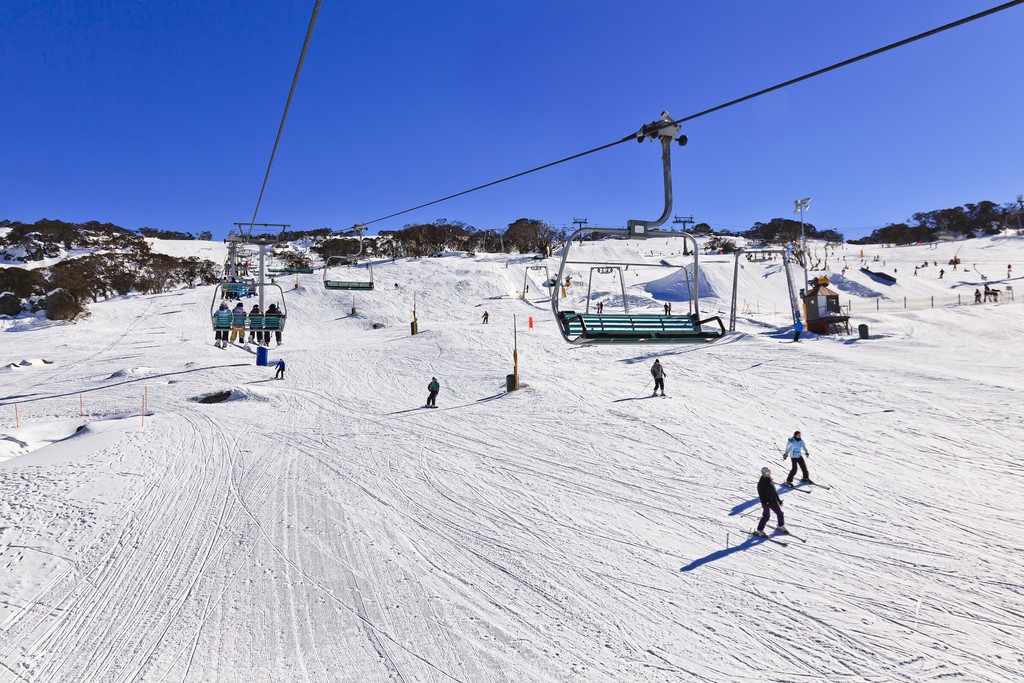
If you want to go to Mt. Perisher’s Peak, hop on the Mt. Perisher Double Chair. This lift runs right next to Mt. Perisher Triple, which has a higher capacity but stops shy of the summit. Heading back down, you have two main options: right or left. The mountain’s right side is a short drop into the gully that separates it from Black Perisher. If you stay high and traverse right, you can take Olympic T-Bar back up the side of Black Perisher, almost to the summit. This face has one terrain park (Sun Valley Rider X), one T-bar (Sun Valley T-Bar), and several short double-blue runs that lead back to Mt. Perisher’s base.
Going left, you’re presented with some longer, slightly less steep runs, all rated intermediate. There are two mid-mountain T-bars here: Eyre and International. If you like this face and want to ski it for a while, hopping on a T-bar and skipping the lift line might be worthwhile.
Heading back to the right side of the map, let’s talk about how to get to and from Smiggin Holes. For starters, you can drive there, park, and spend the entire day on this side of the resort. But if you started your day at Perisher Valley, you must take a few lifts to get there. Take Village 8, Mitchell T-Bar, or Sturt T-Bar from the main base area and head to the bottom of the Telemark T-Bar. You’ll cross over a small bridge and arrive at the bottom of Piper T-Bar.
From the top of Piper T-Bar, take Smiggins Home Trail into the Smiggin Holes Bowl. You’ll pop out near the bottom of Link T-Bar, but any of the seven lifts in the Smiggins are accessible from the bottom. From left to right, they are Link T-Bar, Burke T-Bar, Wills T-Bar, Kaaten Triple Lift, Hume T-Bar, Captain Cook J-Bar, and Scott J-Bar.
These lifts all take you to the top of a ridge running from either side of Mt. Piper. This bowl is mostly beginner and intermediate terrain. It’s a nice place for beginners to learn to take on slightly steeper terrain and gain confidence. If you’ve only been skiing a few times before and want to learn to ski parallel and get good enough to take on other terrain at Perisher, this is the spot.
To return to the Perisher Valley face from Mt. Piper/Smiggin Holes, take Link T-Bar, and Smiggins Escape run. You can either head back to the Perisher Valley base along the Piper T-Bar or toward Blue Cow by sticking to the right and traversing to the bottom of the Interceptor Quad.
Perisher starts to open up once you head toward the Blue Cow/Guthega/Blue Calf Face. But first, you have to cross the narrow canyon that separates the front side of Black Perisher from its back side. The easiest way to do this is to take Perisher Quad Express to the summit of Black Perisher and traverse right. Then, hop on either Pleasant Valley or Brumby T-Bar, which ends at Blue Cow Terminal. You can drop into the shallow ravine on the looker’s right from Blue Cow Terminal, which will take you to the Blue Cow base.
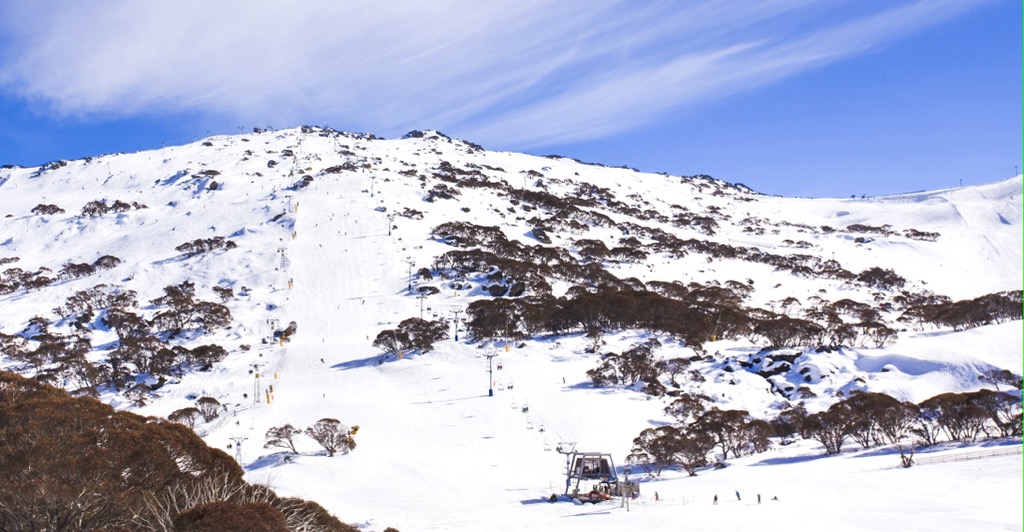
However, intermediates and experts will want to explore this narrow valley. Devil’s Playground sits on the near side and is a must for experts. The far side has excellent intermediate runs like Mogul Matt’s and Roller Coaster, which will drop you off at the bottom of Ridge Quad and Mt. Blue Cow.
But if you skip the narrow valley and traverse Black Perisher’s side canyon, you’ll pop out on the other side into the resort's broadest and most open bowl. Toward the base of Guthega Peak is a fantastic view of Kosciuszko National Park. On your right, you’ll see Blue Calf Mountain, a little hill where the Blue Cow Terminal sits, and beyond that, Mt. Blue Cow.
Directly downhill are just a few groomed runs. Most of this slope is ungroomed and a blast for people who like skiing off-piste. There are sparse glades to cruise through and open faces on a moderate slope. Experts will want to stay to the rider’s left, following an ungroomed run toward some of Perisher’s only double black terrain: Double Trouble. Double Trouble is a knoll on the far looker’s right. It’s a short slope, but exciting terrain. There are lots of small ravines and sparse trees to weave through. The bottom of Double Trouble guides you back to Guthega Way, to the base of Guthega Peak.
Beginners won’t head toward Double Trouble for obvious reasons. If you’re just trying to get to Guthega Peak or Blue Cow, you can take an easy groomed run called Pleasant View Trail to the base.
Either way, dropping into this valley will ultimately take you to the bottom of Guthega Peak. The Guthega Face is very similar to Mt. Perisher in terms of difficulty and terrain. Most of the runs here are blue or double blue, with a few black runs on either side if you’re feeling adventurous. The main lift to Guthega Peak is Freedom Quad Chair, but like the rest of the peaks at Perisher, there are also a handful of mid-mountain tows that service parts of this slope.
Getting off Freedom Quad, you can turn left and head directly under Blue Cow T-Bar to a flat shoulder where two other lifts end (Car Park Double and Blue Calf T-Bar). This lower pitch has a few beginner runs mixed with the intermediate terrain and is more accessible. Heading down this face to the bottom, you’ll arrive at Guthega Centre and Guthega Alpine Village, the most isolated village at Perisher. If you want to spend your day on Guthega Peak - which you easily could - this is a decent place to stop for lunch or drinks.
To get back to Perisher Valley or the Mt. Blue Cow base, you’ll have to take one of these lower lifts and ski down Milk Run to Freedom Quad Chair, and then follow Blue Cow Way. This traverse passes the last terrain park at Perisher, Blue Cow Park. If you want to return to Perisher Valley, Take Terminal Quad Chair to the Blue Cow Terminal, then ski down Amaroo and Easy Rider to Pleasant Valley Quad, putting you back on Black Perisher. Follow Copperhead Road back onto the front side of Black Perisher, and you’ll end up at the bottom of Pretty Valley Double Chair.
But if you’re an intermediate or expert, you will want to keep descending from Blue Cow Terminal along Lower Road Run to the bottom of Mt. Blue Cow, where Perisher’s local experts spend most of their time.
Mt. Blue Cow is the most prominent peak at the resort, boasting long, technical runs, a few rocky cliffs and drops, and a mix of open-face skiing and tree skiing. You can take the Summit Quad Chair or continue to the base and get on the Ridge Quad Chair to get to the summit. Both lifts drop you off just shy of the summit, above a large, open face.
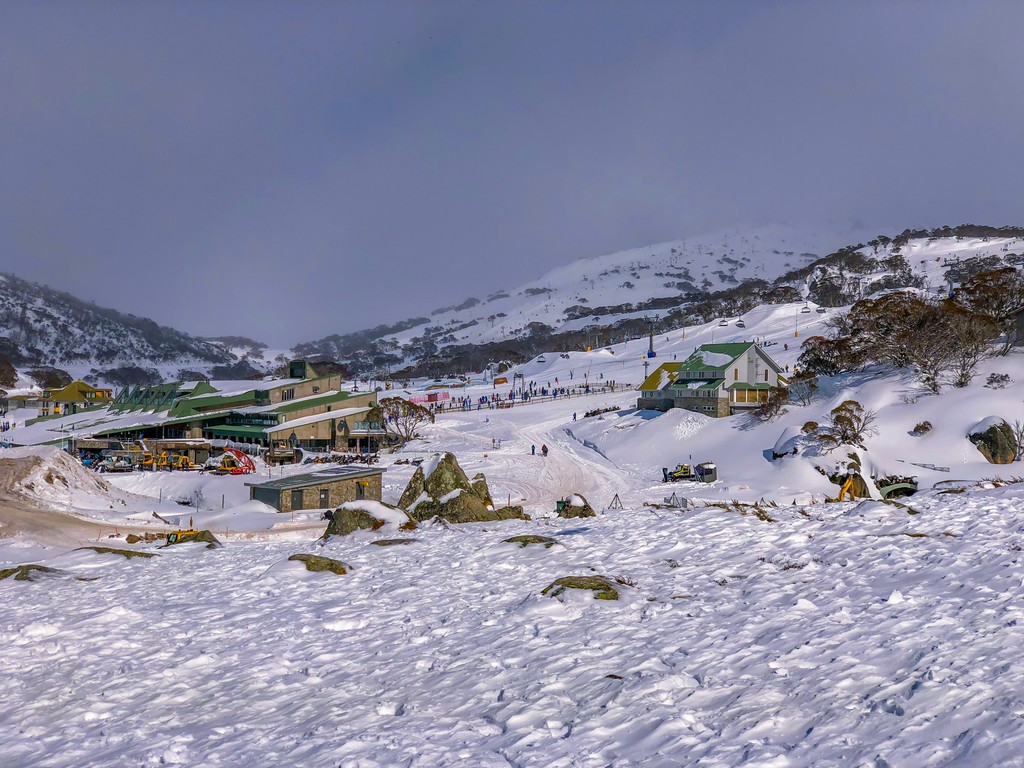
All the expert terrain here runs along the fall line below the top of Ridge Quad. These runs are fast, fun, and some of the only double-black terrain at the resort (aside from Double Trouble). Kamikaze and Rock Garden are local favorites.
If you’re not ready for the challenge, head to the right or left and enjoy some fantastic open-face skiing. Taking Outer Limits to the right, you’ll descend from vast, open snowfields into narrow alleys of trees. This run gets steeper as it descends along the far right edge of the resort boundary, back to the base of Ridge Quad. Heading left, I recommend checking out Zali’s or Side Saddle. Freestyle riders will want to take a run through Blue Cow Park and check out the freestyle features.
From the base of Summit Quad, just follow the same directions to Blue Cow Terminal and Pleasant Valley Quad back to the Perisher Face, and you’re right back where you started.
Perisher is friendly to all genres of snow sports, including Nordic skiing and snowshoeing. An extensive network of trails is near the mountain's front side and Mt. Piper, which you can see on the resort’s Nordic skiing page maps.
The resort maintains two networks of cross-country skiing trails and a few snowshoe trails around Perisher Valley. The larger cross-country skiing area sits opposite Mt. Perisher and Mt. Piper on the southeast side of Kosciuszko Road.
There is a good mix of trails in terms of length and difficulty. The Prussian Flat area is full of long, easy stretches, but the Mt. Wheatley trails steadily climb the hills. The other trail network crosses around the back of Mt. Piper from Smiggin Holes to Perisher Valley.
The resort’s snowshoe trails are much shorter. The main route into the hills climbs from Perisher Village into the mountains to the southwest, up Mt. Duncan, and close to the summit. A loop in Perisher Valley circles part of the village at the base of Black Perisher.
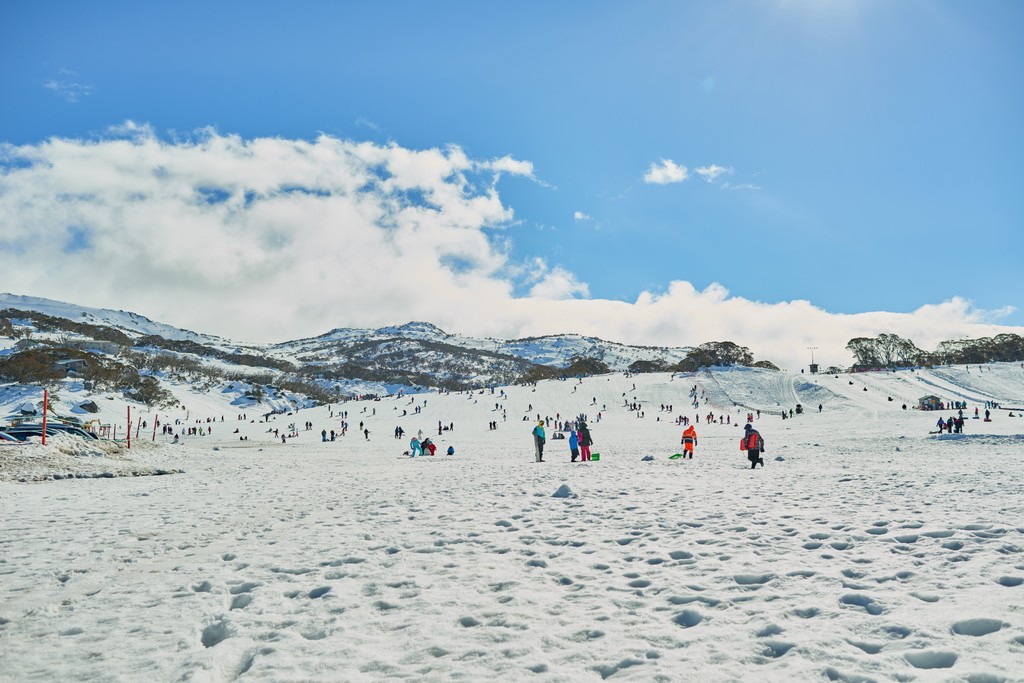
If you’re not familiar with the Snowy Mountains, the best way to explore the backcountry is with a guide. Snowy Mountains Backcountry is the local guiding service; tours range from AUD 295 to AUD 690 per person, depending on how many people are in your group.
There are many touring options around Perisher. Being on the outer limits of a national park gives you plenty of room to spread out. Snowy Mountains Backcountry offers five guided tours, including trips around Guthega Peak, Mt. Twynam (2,196 m / 7,205 ft), Mt. Townsend (2,209 m / 7,247 ft), and Mt. Kosciuszko.
Mt. Kosciuszko is one of the seven summits and the highest peak on the Australian continent.
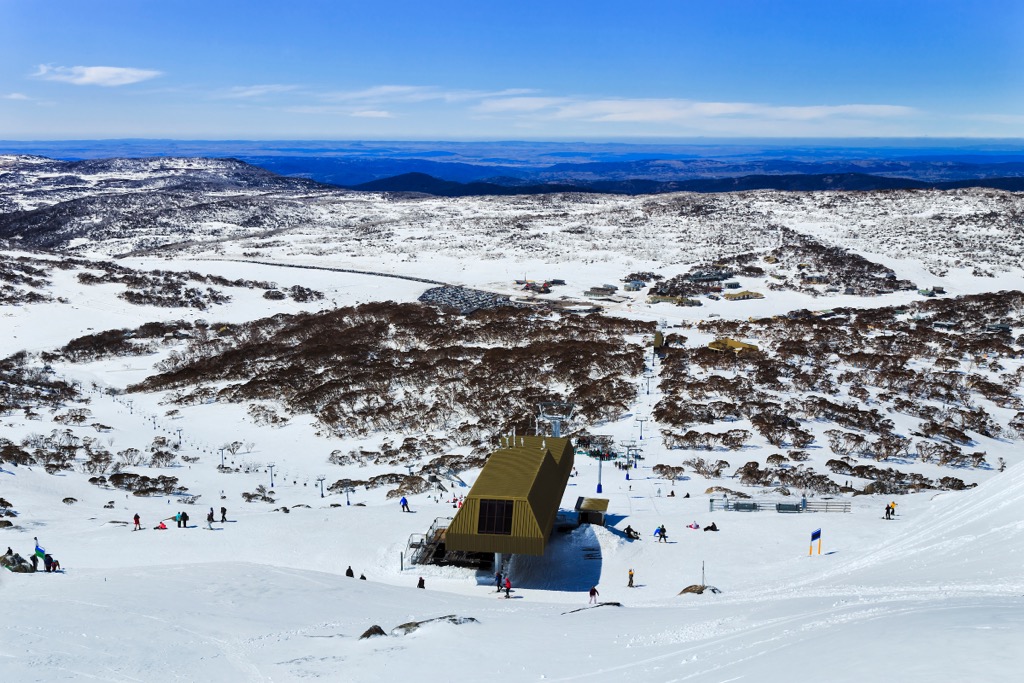
A few pass options exist depending on how you want to ski Perisher. The most expensive is to buy a single-day ticket at the window. Single-day adult passes run AUD 234 (USD 153 or €142). Buying online saves you AUD 73, bringing the single-day price down to AUD 162. Buying more day tickets at once brings the per-day price down by a bit. Two-day passes are AUD 316, or AUD 158 per day, and three-day passes are AUD 421 or AUD 140 per day. Buying more days shaves a little bit more off the cost of each day.
But if you’re going to ski multiple days, there is an even better way to get a good deal. Because Vail Resorts owns Perisher, it is one of the resorts included on the Epic Pass. If you’re unfamiliar with Epic, the idea is that you buy a single pass that gives you access to resorts all over the planet. You will get a certain number of days to ski at each resort, depending on how much you pay. The Epic Pass and other mega passes are the most economical, seamless way to hop from one resort to another for travelers who like to ski many places in a season. All Epic passes include Perisher, so regardless of which you decide on, you’ll have access.
Perisher doesn’t offer a season pass. Instead, they have their own Epic Pass, the Epic Australia Pass. For AUD 1,099, you get unlimited access to Perisher, Falls Creek, and Hotham; this is the best deal if you spend the entire season in Australia.
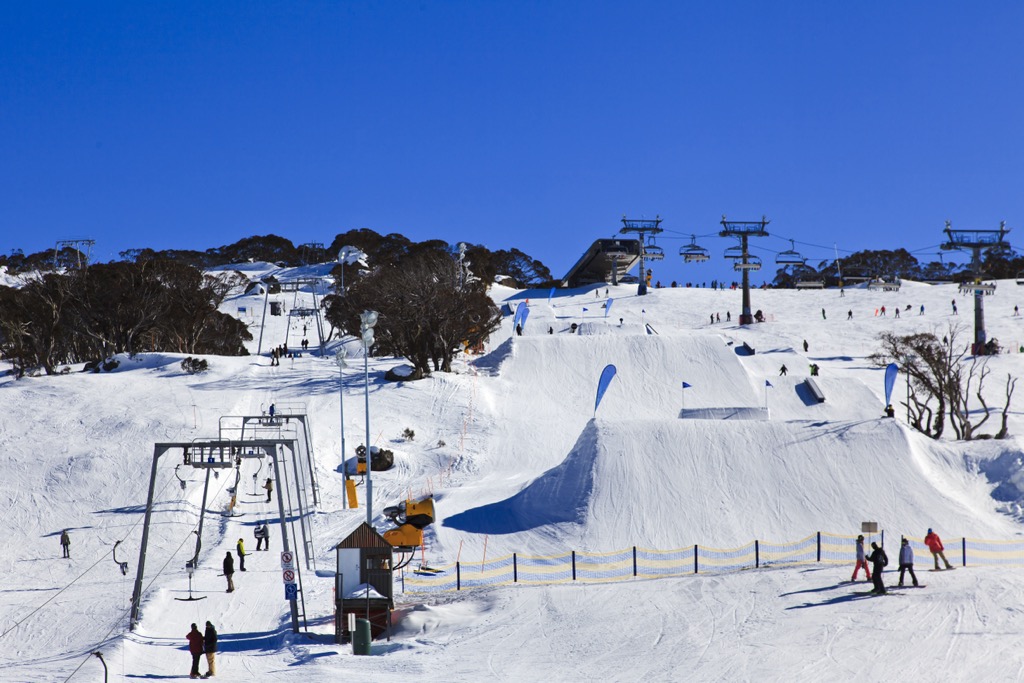
One area where Perisher excels as a ski resort is infrastructure. You're always close to food or drinks between the four independent villages around the mountain. To simplify things, let’s split up the mountain’s restaurants, bars, cafés, and other eateries by location.
Perisher Valley has plenty of everything on offer. It’s the most central location and has the most places to eat and drink at the resort. If you need hot food, check out Loco Mexican in front of Mitchell T-Bar, Kebabz in the upper level of the Perisher Centre, Perisher Pizza in the Pub Family Court, or the White Spider Restaurant in Eiger Chalet.
You can also grab a bite halfway down the mountain at the Mid Perisher Centre Restaurant. If you want a cocktail, head to JAX Bar in the Perisher Centre, The Base 1720 Bar & Restaurant in Perisher Manor, or Powder Inn Restaurant & Bar at the base of Mt. Perisher Double chairlift. If you’re after a coffee, pop into Alpine Eyre at the Eyre T-Bar, Brunelli’s Cafe, or Ski Rock Cafe, both of which are in Perisher Centre. You can also grab donuts at Li’l Orbits Doughnuts in the Perisher Skitube Terminal and baked goods at Sundance Bakery in Perisher Centre.
Blue Cow Terminal has many eateries and cafés for a mid-mountain area. If you want food, stop by the Blue Cow Bistro on the upper level, Doug’s Dogs on the upper deck, or The BBQ, also on the deck. There are a few cafés to choose from if you need a hot drink: Cowpuccino is on the lower level, and both Holy Cow and Stamping Ground Café are on the upper level. The spot for cocktails at Blue Cow is Top Spot on the upper level, where you can get beer or cocktails from 10:00 to 17:00 daily.
Guthega has just a few options. Burning Log Restaurant at the base of Blue Calf T-Bar is the main restaurant, open from 0900 to 1500. BASECAMP Café serves up hot drinks in Guthega Mountain Centre.
Smiggin Holes doesn’t have as many options as Perisher Valley, but you’ll have no trouble getting a bite or a drink here. Pipers Cafe is an all-day stop for hot drinks in the Smiggins Arcade. The Smiggins Hotel, next to Burke T-Bar, has a full-service bar and food. If you’re finishing the day in Smiggin Holes, this is a prime place for après. The Hot Spot Kiosk is more informal and an excellent option to grab a bite on the go.

Perisher has an online portal that makes booking very simple. The resort operates two places of lodging: The Station in Jindabyne and Perisher Valley Hotel.
The Station is more like apartment-style housing, with an ensuite, fridge, and essential appliances. All of the rooms have multiple beds. Options at The Station start around AUD 395 (USD 257 / €240 equivalent) per night. The downside of staying here is that you’ll have to find transport from Jindabyne. The upside is that the rooms work well for large groups, so this is the call if you’re bringing friends or family.
Perisher Valley Hotel is much more upscale. It’s the main ski-in-ski-out hotel at the resort and has a sauna, jacuzzi, views of the surrounding mountains, and walking-distance access to restaurants, bars, and cafés, not to mention the chairlifts. All of that comfort comes at a premium, though. Rooms start around AUD 1,650 (USD 1,075 / €1,005 equivalent) per night.
You can find cheaper accommodation in Jindabyne if you want a good deal. This hotel runs about AUD 260 per night, the same distance from the mountain as The Station, with some very nice amenities and ski storage. AirBnB also has quite a few options around this price point in the neighborhood of Jindabyne.
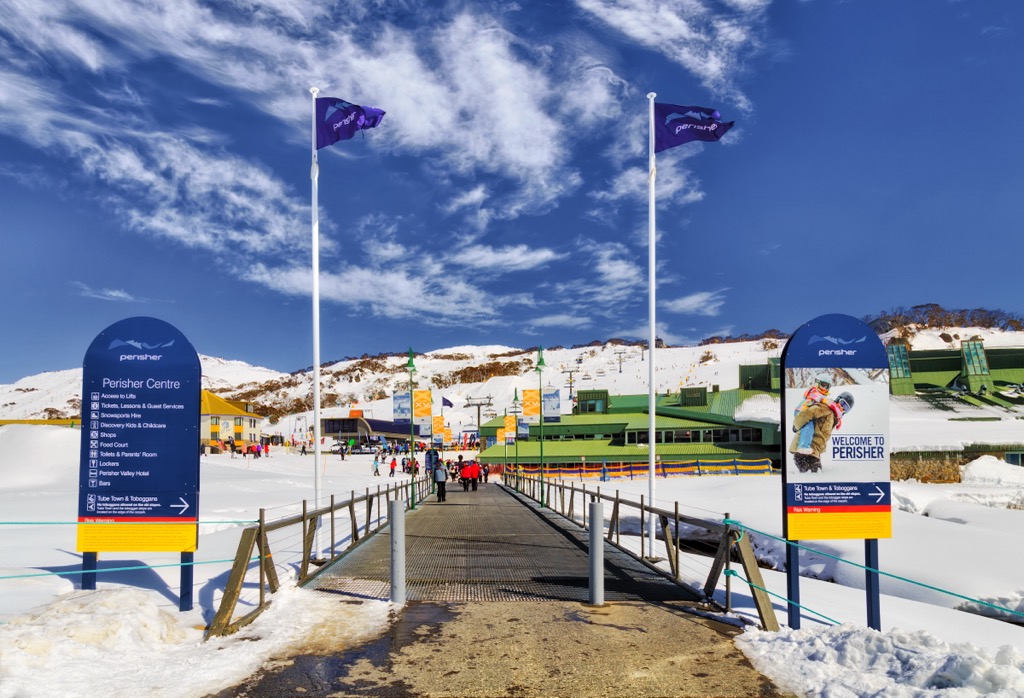
Perisher’s events calendar showcases everything happening at the mountain. Events are pretty nonstop here. The resort hosts night skiing with fireworks two nights per week throughout the season. There’s a music festival in June and live music throughout the season. There are also a lot of junior/amateur competitions for moguls, slalom, and slopestyle during the high season.
The area around Perisher is devoid of large cities. Canberra sits a few hours north, and Jindabyne is a decent-sized town where you can find basic necessities.
The main point of interest near the resort is Kosciuszko National Park, home to the highest peak in Australia. The alpine wilderness in the park is some of the most rugged mountain country on the continent. Many visitors to the area don’t even come to see Perisher but to drive through the park, hike, and climb.
And Perisher isn’t the only resort in the park. Thredbo Ski Resort sits on the southwestern flanks of Mt. Kosciuszko. By comparison, it’s smaller but has more vertical rise than Perisher. The terrain is, on average, steeper and more challenging than Perisher’s. Charlotte Pass sits on the eastern side of Mt. Kosciuszko, north of Kangaroo Ridge. It’s a tiny resort but sits higher than Perisher and Thredbo. If you want an authentic small ski resort experience in Australia, this is where you should be skiing.
